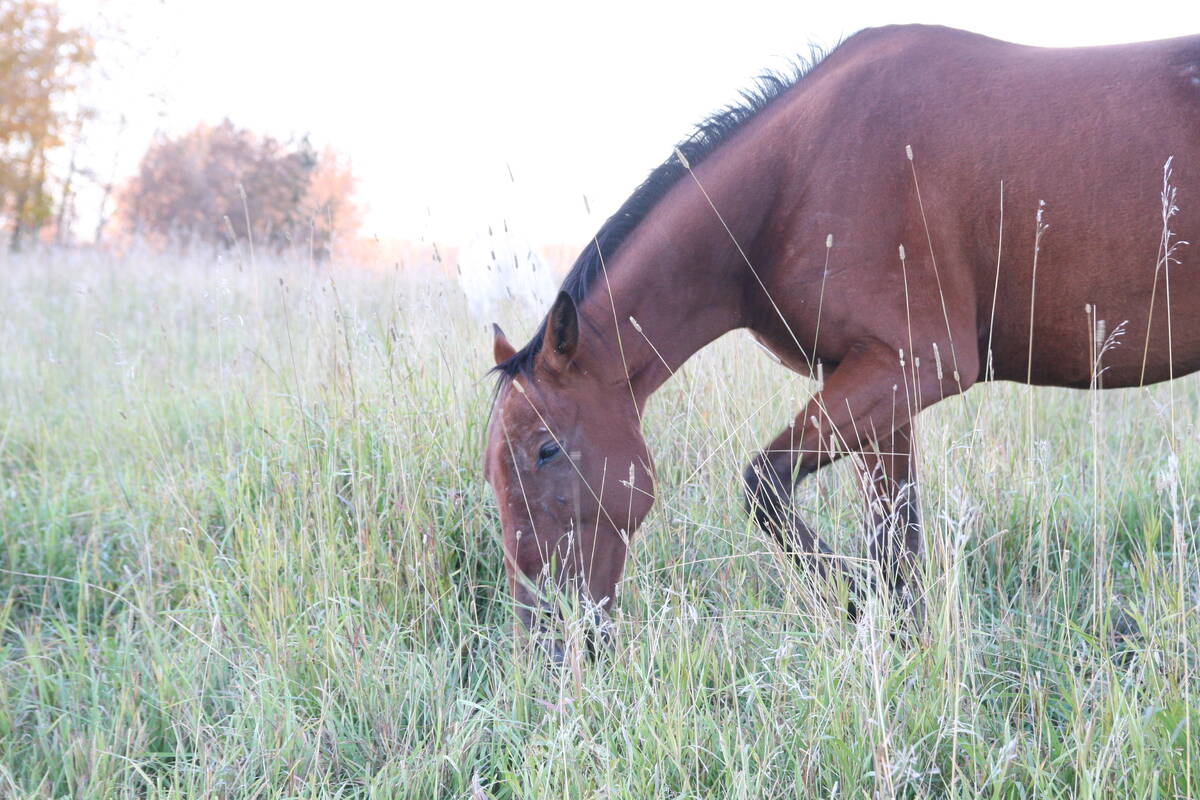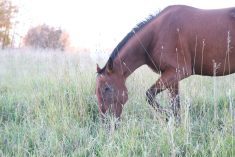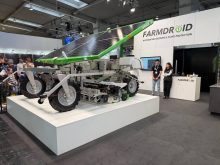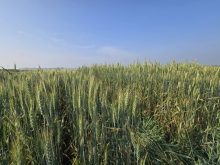Cutting-edge Dutch greenhouse technology is helping a Lacombe vegetable producer tame Old Man Winter through more efficient use of heat, air and light.
Joe Doef is spending $7.5 million to both expand his greenhouse space to eleven acres from five and make it more efficient.
The technology being employed at Doef Greenhouses could soon become the standard in Canada, says greenhouse consultant Cees VandenEnden of Hortisource Consulting Inc. in Water Valley.
“I expect that, within the next two years, any expansion will adapt some or all of this technology,” says VandenEnden. “For certain parts of the investment, we have calculated a payback of between three and four years. Although some of these investments are seven-digit numbers, if you can make it back in three or four years, in my opinion, it’s a no-brainer.”
Read Also

Beware giving horses too much iron
Horses consuming too much iron through diet or well water risk health problems like laminitis. Mineral testing forage and water is good practice for owners.
The expansion will not only result in year-round production of English cucumbers, but roughly double production compared to other traditional commercial greenhouse systems using no lights, says Joe Doef, president of Doef Greenhouses.
The company estimates that within three years it will pick about 300 English cucumbers per square metre per year, resulting in about 6.3 million cucumbers of annual production. Moving cucumber production to the greenhouse expansion will free up four acres that are currently under lights and allow production two acres of tomatoes and two acres of mini-cucumbers year-round.
One of the new technologies employs a double blackout screen installed inside the roof of the greenhouse. One screen helps trap heat in the greenhouse in winter and the other prevents light from projecting outside at night. The system retains 99 per cent of the light energy inside the greenhouse. Doef estimates that by closing both screens, the greenhouse will achieve over 60 per cent of its energy needs with some of the heat energy coming from the light ballasts.
In summer, the screens can be closed to shield plants from overexposure from intense light on sunny days.
The expansion also includes the installation of a vertical air circulation system. The system circulates warmer air from the top of the greenhouse and distributes it under the crops to maintain targeted temperature and humidity levels to help plants grow better. It also makes use of heat that is normally vented off, resulting in less demand on the heating system.
“It’s the same idea as ceiling fans but the air is blowing down through plastic tubes so that the growing plants will not get damaged,” says Doef.
The fans will help maintain an even temperature from top to bottom. It is estimated that by using this system, the temperature differential from top to bottom will be less than one half of one degree.
The greenhouse has also installed diffused glass that has been etched using nanotechnology, resulting in very evenly spread light that penetrates deeper into the plant canopy. The result is more crop production and better quality.
“This is the first time many of these technologies have been installed in North America,” Doef says. “The new innovations come from different places, but we put it all together. The height of the greenhouse, together with the misting system and the hanging growing crops, as well as the use of carbon dioxide from our efficient boiler will all help to create an optimum growing environment.”
Parts of Canada and the Netherlands are located near the same latitude, so they receive about the same amount of sunlight, meaning that many of the technologies related to light diffusion should function just as well in this part of Canada, says Doef, who emigrated from the Netherlands in 1969.
Doef owns the business with sons Eric and Paul and son-in- law Phil Visscher. The main motivation for the expansion was because of the interest shown by the family’s second generation to maintain and improve on the business started by Joe in 1970. He says he is pleased with the interest shown by his children because his parents had to sell their flower bulb business in Holland since there was no one to take it over when they retired.
———
“Althoughsomeoftheseinvestmentsareseven-digitnumbers,ifyoucanmakeitbackinthreeorfouryears,inmyopinion,it’sano-brainer.”
CEES VANDENENDEN
HORTISOURCE CONSULTING INC.
———
“ThisisthefirsttimemanyofthesetechnologieshavebeeninstalledinNorthAmerica…”
JOE DOEF
PRESIDENT, DOEF GREENHOUSE














